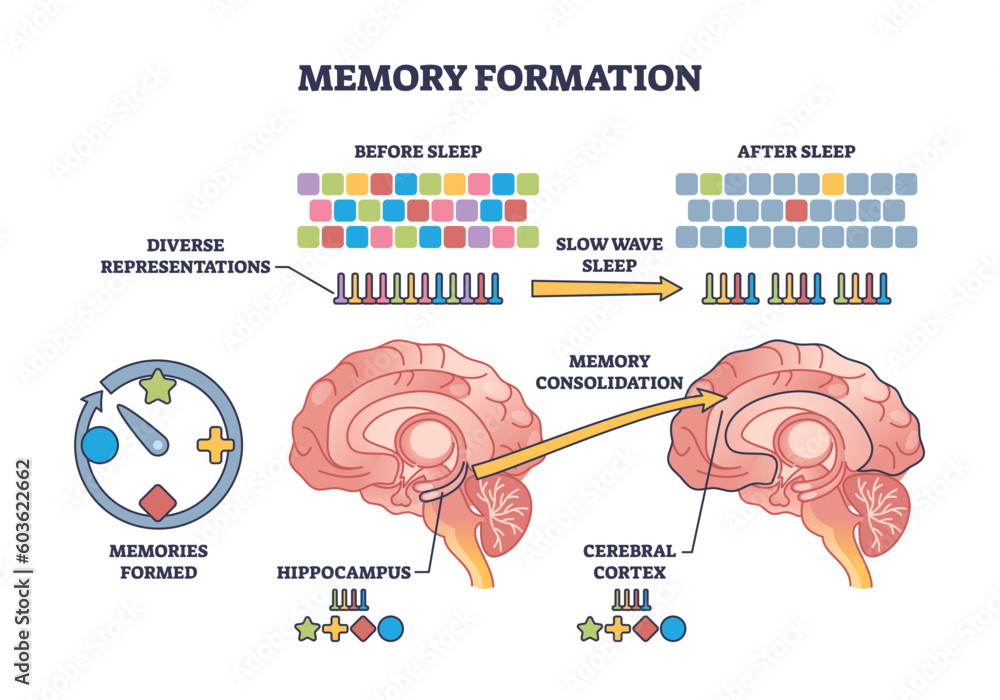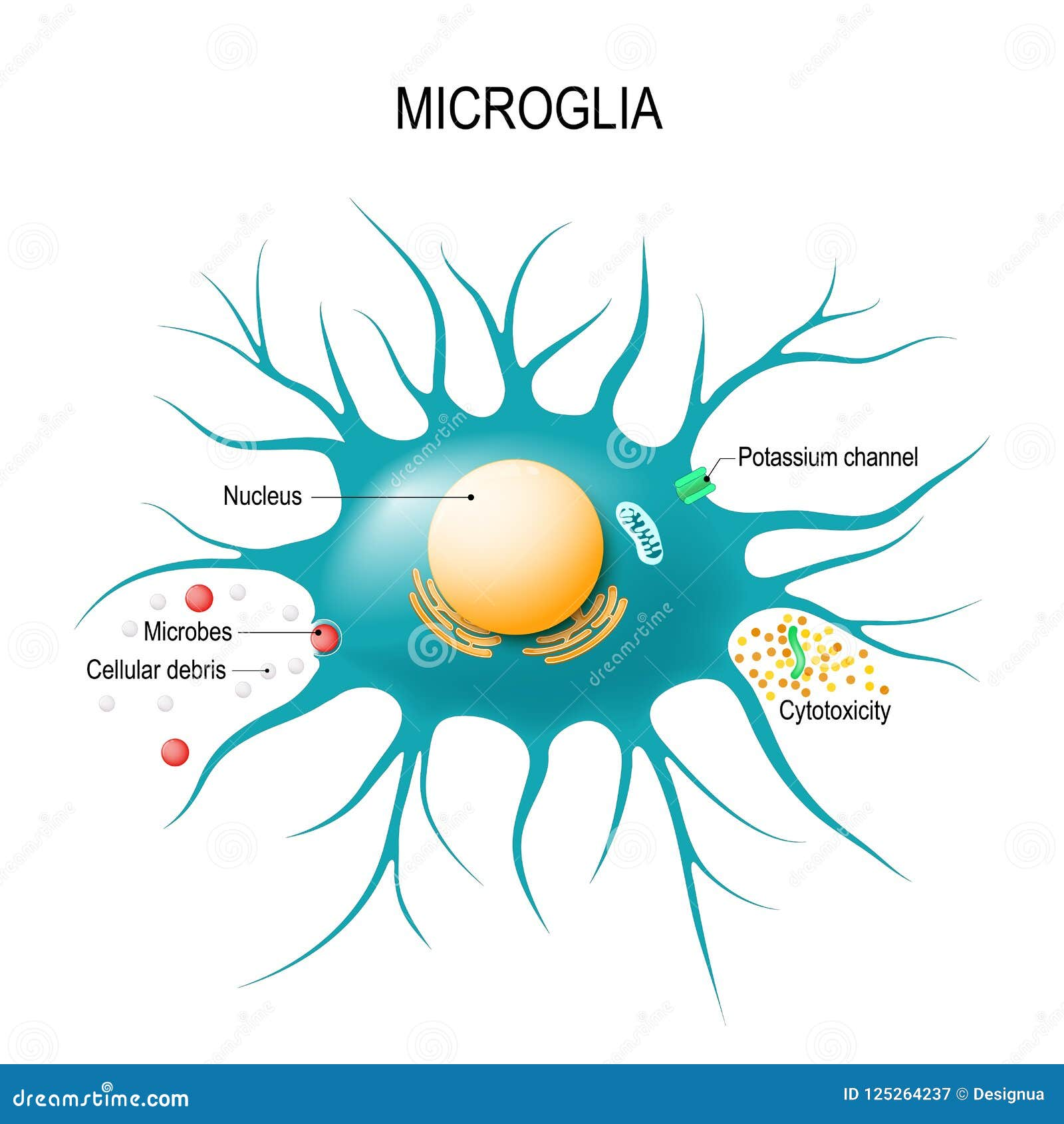Memory formation is a fascinating process that taps into the complex workings of our brain, allowing us to learn and retain information throughout our lives. A recent study led by Harvard researchers has uncovered groundbreaking insights into this intricate mechanism, highlighting the significance of synaptic plasticity—the ability of synapses to strengthen or weaken over time—as a core element in the retention of memories. By employing a novel technique called EPSILON, scientists are now able to visualize the synaptic behavior at unprecedented levels of detail, paving the way for future treatments of neurological disorders, including dementia. This research not only broadens our understanding of how memories are formed but also opens new avenues for dementia treatment, as it offers potential therapeutic targets within the brain’s architecture. As we delve deeper into the molecular foundations of learning and memory, the intersection of neuroscience and practical application may revolutionize our approach to cognitive health.
The concept of memory accrual involves intricate biological processes that govern how experiences are encoded, stored, and recalled within the brain. Recent advancements in neuroscience have shed light on the mechanisms that underpin these cognitive functions, with a particular focus on the role of synaptic connections. The innovative technique known as EPSILON has emerged as a powerful tool for researchers, allowing them to explore the dynamics of learning through the lens of synaptic plasticity and protein interactions. By delving into the molecular architecture linked to memory retention, scientists aim to develop strategies for addressing various neurological challenges, especially in the realm of dementia treatment. The exploration of memory formation not only enhances our understanding of cognitive processes but also has profound implications for improving human health.
Understanding Memory Formation: The Role of Synaptic Plasticity
Memory formation is a complex process that involves intricate interactions between neurons in the brain. At the heart of this process lies synaptic plasticity, which refers to the ability of synapses, the connections between neurons, to strengthen or weaken over time based on activity levels. This dynamic adjustment is essential for learning new information and retaining memories, as it allows the brain to reorganize itself in response to experiences. With synaptic plasticity, the brain can adapt to novel situations, highlighting its remarkable capability to evolve and change throughout an individual’s life.
Recent research conducted by a team of Harvard scientists has shed new light on the mechanisms underlying memory formation. Utilizing a technique known as Extracellular Protein Surface Labeling in Neurons (EPSILON), researchers were able to observe and map how molecular components at synapses function during learning processes. By focusing on key proteins like AMPARs, the study revealed how these proteins influence synaptic strength, further emphasizing the crucial role of synaptic plasticity in crafting our unique memories. Understanding these processes could lead to breakthroughs in treating neurological disorders that impair memory.
Innovative Techniques in Neuroscience: The EPSILON Approach
The EPSILON technique represents a monumental advancement in the field of neuroscience, allowing researchers to visualize synaptic behavior at unprecedented resolutions. Traditional methods often fell short in providing detailed insights due to their invasive nature. However, EPSILON employs fluorescent labeling and cutting-edge microscopy to illuminate molecular interactions without compromising the integrity of living brain tissues. This innovation enables scientists to meticulously study the synaptic changes associated with various learning experiences, paving the way for deeper understanding of cognitive functions and potential therapies for neurological disorders.
By applying EPSILON, the research team discovered significant correlations between AMPARs and memory traces in animal models, particularly in scenarios that involve contextual learning, like fear conditioning. These findings not only highlight the specific roles of AMPARs in synaptic modulation but also enhance our understanding of how memories are encoded and preserved within neural circuits. As researchers utilize this technique in varying contexts globally, EPSILON is set to be a transformative tool in unraveling the complexities of memory encoding and retrieval.
Neuroscience and Neurological Disorders: The Path to Treatment
With the growing understanding of memory formation and synaptic functions, there is immense potential for developing novel treatments for neurological disorders such as dementia and Alzheimer’s disease. These conditions are characterized by significant synaptic dysfunction, resulting in debilitating memory loss and cognitive decline. By leveraging techniques like EPSILON, researchers can gain insights into the molecular underpinnings of these diseases, identifying specific synaptic changes that occur with memory impairment.
Exploring how synaptic plasticity affects memory formation will open new avenues for therapeutic interventions. For instance, tailored treatments could be designed to enhance synaptic strength, thus potentially restoring memory capabilities in affected individuals. The ongoing studies derived from EPSILON methodology could lead to groundbreaking approaches that not only ameliorate symptoms of cognitive decline but also target the root causes of memory-related disorders, offering hope for improved quality of life for those affected.
The Role of AMPARs in Memory and Learning
AMPARs, or α-amino-3-hydroxy-5-methyl-4-isoxazolepropionic acid receptors, play a critical role in the process of memory formation and learning. These receptors are integral to synaptic plasticity, as they facilitate the transmission of signals across synapses. When learning occurs, AMPARs contribute to the strengthening and reorganization of synaptic connections, enabling us to retain new information. Understanding the behavior of AMPARs in various learning contexts offers valuable insights into how memories are formed and the biological processes that underpin this intricate mechanism.
Research utilizing EPSILON has provided unique perspectives on the localization and movement of AMPARs during significant learning events. Through this high-resolution mapping, investigators have begun to uncover the nuances of how these receptors interact with other synaptic proteins and how such interactions influence memory traces. This deeper understanding can potentially inform future strategies for enhancing learning and memory retention, highlighting the symbiotic relationship between our neural architecture and cognitive capabilities.
The Future of Memory Research and Therapeutic Innovations
The future of memory research appears promising, especially with the advent of advanced techniques like EPSILON. As scientists continue to unravel the complexities of how learning and memory are formed, we can anticipate significant progress in developing therapeutic strategies aimed at treating cognitive disorders. By elucidating the detailed mechanisms of synaptic plasticity and memory encoding, researchers are poised to pioneer interventions that target specific impairments associated with conditions such as dementia.
Furthermore, the dissemination of the EPSILON technique among global research communities suggests that collaborative efforts will accelerate discoveries in cognitive neuroscience. As more laboratories apply this innovative approach to diverse contexts, the collective insights gained could revolutionize our understanding of memory processes and lead to novel treatments that enhance cognitive functioning. The integration of these advanced methodologies stands to reshape the landscape of neurological treatments, reaffirming the impact of basic science in addressing pressing health issues.
Exploring the Molecular Architecture of Memory
The architectural intricacies of memory reside in the molecular framework that enables synaptic connections to dynamically adapt to learning experiences. Utilizing the EPSILON technique, researchers have begun to chart the relationships between various proteins at the synapse, particularly those involved in synaptic plasticity. Mapping this molecular architecture provides a clearer view of how synapses are modified, which is essential for understanding the foundation of memory formation.
As these molecular connections become clearer, researchers can delve into more focused studies on how specific alterations may affect memory retention and recall. This exploration not only emphasizes the critical need for sophisticated imaging techniques in neuroscience but also highlights the potential for new therapeutic interventions that aim at restoring or enhancing memory-related functions disrupted by neurological disorders.
The Intersection of Basic Research and Clinical Applications
The interplay between basic scientific research and clinical applications is crucial in advancing our understanding of memory formation and treatment for neurological disorders. The discovery of new techniques such as EPSILON stems from a foundation of fundamental research that explores the natural mechanisms of the brain. This interconnectedness allows scientists and clinicians to translate laboratory findings into practical applications that can address real-world challenges, such as memory loss in Alzheimer’s patients.
Cohen’s remarks on the historical significance of foundational research in driving contemporary innovations underscore the importance of sustained investment in scientific inquiry. As researchers continue to develop innovative methodologies to study synaptic behavior and memory dynamics, the potential for breakthroughs in therapeutic interventions increases significantly. This symbiotic relationship between basic science and clinical application promises to enhance our approaches to improving brain health and cognitive function.
Mapping Memory: Insights from Synaptic Changes Over Time
The ability to map the changes in synapses over time is a pivotal advancement in understanding how memories are formed and retained. The application of the EPSILON technique allows researchers to observe the temporal dynamics of synaptic alterations associated with memory encoding. This process sheds light on the rules that govern which synapses are strengthened or weakened during specific learning experiences, revealing patterns integral to memory formation.
Through these observations, researchers can draw correlations between synaptic modifications and the development of memory engrams, which are essential for long-term memory retention. The insights gained from monitoring these synaptic changes can contribute significantly to the understanding of cognitive functions, providing a framework for future studies aiming to dissect the complexities of memory processes and their implications for treating memory impairments associated with neurological disorders.
The Potential Impact of EPSILON on Cognitive Studies
The EPSILON technique not only enhances our understanding of synaptic plasticity but also holds great potential for future cognitive studies. By providing unprecedented visualizations of synaptic activity, EPSILON could lead researchers to uncover nuanced relationships between synaptic changes and behavioral outcomes. This innovative approach allows for the exploration of how different types of memories manifest in the brain and the specific synaptic pathways involved.
As laboratories worldwide adopt this novel technique, we may witness an exponential increase in discoveries related to learning and memory. These findings could illuminate the distinctions between various cognitive processes, aiding in the classification and understanding of different types of memory. Ultimately, the continued application of the EPSILON method may revolutionize both our fundamental understanding of memory in neuroscience and the development of targeted therapies for cognitive rehabilitation.
Frequently Asked Questions
How does synaptic plasticity contribute to memory formation?
Synaptic plasticity is crucial for memory formation as it involves the strengthening and modulation of synaptic connections between neurons. This dynamic process enables the brain to adapt and reorganize in response to new information, facilitating learning and embedding memories.
What is the Extracellular Protein Surface Labeling in Neurons (EPSILON) technique and how does it relate to memory formation?
The EPSILON technique allows researchers to map key proteins, such as AMPARs, involved in synaptic plasticity. By observing these proteins at high resolutions, scientists can gain insights into the molecular mechanisms underlying memory formation and how synaptic behaviors change during this process.
What role do AMPARs play in learning and memory processes?
AMPARs, or AMPA receptors, are integral to synaptic plasticity and play a significant role in the transmission of signals across synapses. Their movement and interaction at synaptic sites are essential for forming lasting memories and are critical in the brain’s ability to adapt during learning.
How can understanding memory formation help in dementia treatment?
By elucidating the biological mechanisms of memory formation through techniques like EPSILON, researchers can better understand synaptic dysfunction in dementia. This knowledge may lead to the development of targeted therapies that can restore or enhance synaptic function, potentially improving memory and cognitive deficits in dementia patients.
What advancements have been made in the study of memory formation at Harvard University?
Harvard researchers have unveiled the EPSILON technique, which provides unprecedented detail on synaptic interactions crucial for memory formation. This innovative method allows for high-resolution mapping of protein movements, offering new insights into how memories are created and how synaptic plasticity operates in the brain.
How does the history of synaptic plasticity affect memory storage?
The history of synaptic plasticity reveals how and when synaptic strengths change during memory formation. By tracking these changes over time, researchers can identify which synapses are strengthened or weakened for effective memory storage, aiding in the understanding of cognitive processes.
| Key Points | Details |
|---|---|
| New Technique | Extracellular Protein Surface Labeling in Neurons (EPSILON) mapping molecular processes in learning and memory. |
| Relevance | Insights for treatments of neurological disorders such as dementia. |
| Synaptic Plasticity | Involves strengthening/modulating connections between neurons, critical for learning. |
| Research Team | Led by Adam Cohen at Harvard; includes diverse researchers from various institutes. |
| Application in Studies | Demonstrated correlation between AMPARs and memory expression in contextual fear conditioning in mice. |
| Future Directions | Exploration of cognitive phenomena and therapeutic strategies to improve memory. |
Summary
Memory formation is a complex process involving the synaptic connections between neurons in the brain. The groundbreaking EPSILON technique developed at Harvard provides profound insights into how these connections facilitate learning and memory. By mapping synaptic plasticity, researchers can now observe how memories are formed at a molecular level. This research not only sheds light on fundamental aspects of memory formation but also paves the way for developing new therapies aimed at treating disorders like dementia, emphasizing the significance of understanding memory mechanisms for advancing human health.



